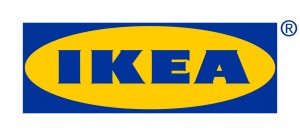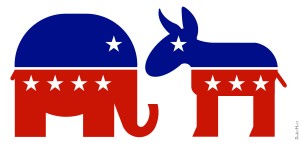I am going to go over approximately 5 technologies that can be used by as IT in healthcare. The very first one that we are going to look at is CRM. What is CRM? CRM is customer relation management. For an industry like healthcare, where so much relies on the physician-client relationship, it is vital for those in the healthcare industry to know their clients if they want to provide high quality and service. This may include things like appointment reminders being sent out, or birthday cards being sent. It could also involve knowing how often a client visits the hospital, or generally collecting patient information to be used by management to provide direction. While the term CRM can, and has traditionally been done without technology, technology allows for the automation of many tasks which were time consuming in the past. In BC, healthcare is mostly focused on providing good care and not necessarily good service. Doctors are paid on a fee schedule meaning that everything that they get paid for is based on how much work they do. Therefore, there is little to no incentive in the public system in Canada for physicians to really get to know their customers well. Healthcare CRM is much more useful in the USA because doctors and clinics there really need to get to know their clients because of the fierce competition. Here, CRM provides an opportunity to get to know each individual clients needs, and how to market to them very effectively. The CRM software collects as much data as they can about a patient in order to personalize services. There are a few CRM providers in healthcare such as Salesforce, Microsoft Dynamics and CPM Healthgrades to name a few. CPM Healthgrades, being specifically designed for the health industry has many features like health risk assessments, online educational information, as well as some BI features that look at marketing and BI. Salesforce and Dynamics are more generalized solutions that offer simple but general solutions. However, they are not nearly as specialized towards the healthcare field and would probably require large amounts of money to customize them to the individual needs of a clinic.
Enterprise Architecture
After being encouraged to attend an enterprise architecture conference at UBC, I had absolutely no place to start. What is Enterprise Architecture? How does it work? Why is it important? I heard that something called TOGAF (The Open Group Architecture Framework) was going to be taught.  The website contained extensive amount of jargon which was difficult to understand. The following video gave a much simpler perspective.
The website contained extensive amount of jargon which was difficult to understand. The following video gave a much simpler perspective.
Essentially, Enterprise Architecture transfers the picture above into the picture below. As you can see, it is a lot less confusing. This visualization of Enterprise Architecture showed me what what it really means to have an architecture; it means looking to the future needs of a company in a “big-picture” way, and then creating networks which accommodate those needs. Obviously, that is easier said than done. It is essentially strategic planning designed to ensure that information flows smoothly, and that changes can be made without affecting the overall harmony in the system. It is immensely valuable and important, especially with increasing demands for information.
As you can see, it is a lot less confusing. This visualization of Enterprise Architecture showed me what what it really means to have an architecture; it means looking to the future needs of a company in a “big-picture” way, and then creating networks which accommodate those needs. Obviously, that is easier said than done. It is essentially strategic planning designed to ensure that information flows smoothly, and that changes can be made without affecting the overall harmony in the system. It is immensely valuable and important, especially with increasing demands for information.
How To Free The Bird
Now that we are a couple weeks past the Twitter IPO, questions about whether or not Twitter can be profitable have been raised. After learning the business canvas model in comm 101, it quickly became apparent to me how important it is to have a clear value proposition and revenue stream. Twitter needs a clear value proposition to its investors, and actual revenue stream if it is to be a good investment. The IPO document never specified how Twitter intends to make money. Revenue streams are a fundamental part of any business model because without profits (which requires revenue), a company will go out of business. Twitter has built up an asset though: its large customer base. The obvious revenue stream for Twitter is selling advertisements. However, Twitter also has the ability to sell big data to marketers for large amounts of money. If Twitter were to partner with companies, and use keywords from tweets, it would have a clear value proposition to marketing agencies. As much as the general public dislikes their information being sold, they are not usually willing to do anything about it. Therefore, if Twitter can break down its data, and package it nicely, it can sell its business plan to investors.
Is Facebook “Failing Its Marketers”?
Today I learned the importance of using many sources in a blog post. Wanting to write a post in reference to an external blog by Nate Elliot, VP of Forrestor Marketing. In his post, he suggests that Facebook is “failing its marketers”. I wrote 195 words and then came upon an article in Businessweek which took a more holistic approach to the issue.
This experience showed me the importance of searching out multiple perspectives before coming to conclusions. Now onto the topic at hand. Is Facebook a worthwhile place to advertise? Admittedly, Nate Elliot has a point that Facebook should leverage its data more to create more personalized ads based on what people “like”. However, they also need to be careful not to flood their website with advertisements as that would “alienate users”. What I realize now is that although Facebook may not be taking full advantage of its data, it is for many companies entirely worth it. As opposed to the marketing research we did in class, Facebook has the data (or the answers). If it can ask the right questions its advertising can become more effective. What Elliot does not realize is that this is a process that takes time.
Is It Too Hard to Learn From The Past?
Is ranking employees beneficial? This is the question posed by Carrie Zhou in relation to Yahoo’s decision to bell-curve its employees. Carrie rightfully pointed out the negative effects curving employees and managers. I believe that Yahoo should have learn from Microsoft. An important part of HR as we learned in class is performance management; how do employers reward high performance?
As this article about Microsoft points out, curving gives managers a quota of failing grade they must distribute. This is a cruel burden to put on managers who may not feel anyone deserves a failing grade. While well-intentioned, this ranking system misses the point. Yahoo should realize how harmful a standard ranking system has been for Microsoft. Carrie mentioned that workers tend to be unsatisfied in the ranking system. Stack ranking was described as “the most destructive process inside of Microsoft” by every employee interviewed. Ultimately, the problem stems from too much competition. The incentive to outperform everyone else to receive bonuses kills teamwork and cooperation. In turn, the creative engine of a company is hindered. Stack ranking is an HR nightmare. Admittedly, it does make bonuses easier to dish out. However, it would seem ironic to give out performance bonuses when overall performance decreases to an ill-designed bonus system.
Future (ad)Ventures
While reading through Corina Bizim’s blog on crowd-funding, I was immediately reminded of a TED talk I recently viewed. Corinna wrote about connecting consumers to producers through crowd-funding. Who better to decide which projects are developed than those who are using them. The idea is that anybody can pose an idea to the internet community . If people approve, they put their own money towards the project. This transparent model has successfully led to the invention of many innovative products.
The Internet provides a platform through which an entrepreneur can reach an audience. The publics role in product development is minimal. Their input allows for the creation of better products. The power of crowd-funding is in the relationship between the inventor and investor. Only ideas that inspire and resonate with the investor are funded. The Internet connects innovators to a larger audience than possible in the past. In the video, Amanda Palmer says that innovators need to “ask without shame”. The Internet is a place to ask for the resources necessary to translate an idea into reality. Gone are the days when entrepreneurs are at the mercy of venture capitalists. Rather, it is a story, idea, or adventure, communicated to the world via the Internet, that will become actualized. This is a new and better way of entrepreneurship.
Stop Bluffing and Go All-In
Let’s Go All-In on Selling Sustainability
“Measure what you care about and lead the change.” In this inspiring talk, Steve Howard addresses the idea of shared value. Shared value isn’t compromise but about going all in. IKEA does this by using sustainable cotton, moving to renewables such as solar and wind, and implementing a code of conduct that protects its workers around the world.
Interestingly, the talk is entitled “Let’s go all in”. If shared value and sustainability is so profitable, why aren’t all the chips on the table? The following blog explains Shared Value vs Don’t Be Evil
The first problem has to do with performance. Focusing on quarterly profits hinders a long-term perspective for management. Investing in renewables may take time to pay off. Secondly, (and I would argue the largest flaw with shared value) is that shared value relies on picking the “low-hanging fruit”. I agree wholeheartedly that there is shared value to be created. These opportunities should be pursued (as IKEA has by investing in a sustainable future). However, it is inevitable in more cases that profit, and social benefit or environmental well-being come into conflict. Belief to the contrary is naive. It is in these
cases that the application of shared value is unclear and very limited. That being said, there are extensive and untapped potential for shared value. Go all-in for that first. Then we can make the harder decisions about the harder decisions.
What is FINRA and what do they do? We briefly looked at this organization in our readings and discovered that it protect investors. I wanted to see FINRA in action.
This article explains what FINRA does and this short video explains FINRA’s basic purpose.
With institutions as large as financial markets, it is difficult, but vital, to have FINRA. Knowing little about the financial markets myself, I would feel uncomfortable trusting money to people I have never met. The existence of fraud should necessitate caution at every corner (see here) 
The question then becomes, why is FINRA so important. Using what we learned in commerce about the time value of money, hoarding cash will not maximize its future value. Without FINRA or a regulatory body, the risk of fraud would prevent investment. This harms the investor as well as companies. The investor would be unable to expand the value of their money. The company could not use this money to expand and better the economy.
People should feel their money is safe and be protected from fraud. FINRA provides security for investors, and harshly disciplines companies that misbehave.
Political Games: Chess and Chicken
In last weeks tutorial, we discussed the current deadlock in American economy.
I think this article has some very practical and wise advice for the Republicans, yet it also raises some larger issues. If the Republicans don’t back out, it will cause enormous harm to the American economy, and that is not in the best interests of American citizens. Obamacare has been passed democratically, however the Republicans are so set against it that they will not compromise. This is illogical for a 3 main reasons
1) The 800,000 workers out of a job are not likely to forget why they were put out of a job in the next election
2) If the Republicans refuse to make a deal by accepting the budget and raising the debt ceiling, they will be responsible for the great economic disruptions that ensue.
3) It goes against democratic principles! Americans voted the Democrat government into power. holding the country captive is irresponsible and does not benefit the people (especially in a country that is “by the people and for the people”).
Stop stalemating! Every day that goes by is hurting American citizens!
Stop playing chicken! We are not in kindergarten anymore! Get over it and move on!
Misguided Motivation
Is merit-based pay for teacher a good idea?
The fraser institute thinks so (article 1) and so does the state of Louisiana (article 2). At first glance it might makes sense. An economist would probably tell you that people are motivated by incentives so merit-based pay would improve teaching and therefore education.
Why is such a value proposition flawed?
1) There needs to be consistent criteria for measuring merit of a teacher. It cannot be on students evaluation of a teacher or the teacher would cater to pleasing students rather than teaching effectively. It cannot be a non-standardized testing method or else teachers will simply inflate their students grades to earn more money. Thus we are left with standardized testing. This leaves teachers with little ability to diversify curriculum and the teacher ends up teaching towards success on the test rather than on learning for learning’s sake.
2) Unions are against merit-based pay. Unions would lobby it to death because the teaching union pays on seniority, education, and job category.
 3) There is an assumption that money is sufficient motivation especially in the amounts of a few hundred dollars. Other factors such as purpose, autonomy and mastery are intrinsic motivators. In fact, money as a motivator has been shown to decrease performance in tasks that require cognitive ability.
3) There is an assumption that money is sufficient motivation especially in the amounts of a few hundred dollars. Other factors such as purpose, autonomy and mastery are intrinsic motivators. In fact, money as a motivator has been shown to decrease performance in tasks that require cognitive ability.
The carrot and the stick are outdated. In this case, the carrot is simply harming students and teachers.








